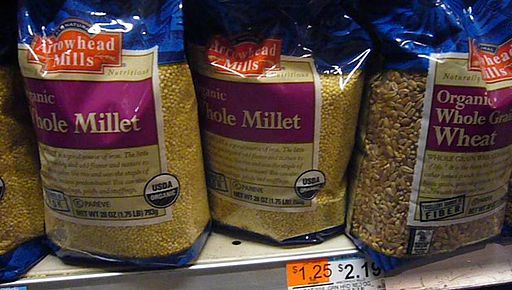 An easy way of adding a layer of health insurance to your life is consuming more whole grains. Whole grains contain nutrients such as fiber, protein, antioxidants, vitamins, and trace elements. A whole-grain rich diet has been found to minimize the risk of type 2 diabetes, heart disease, obesity and some cancer types. Another beneficial aspect of a whole grain diet is the improvment of bowel health by maintaining regular bowel movements and promoting the growth of useful bacteria in the human colon. It is unfortunate that only ten percent of the American population consume the recommended minimum amount of three servings daily. One of the reasons for this trend is that it is sometimes hard to tell which foods are whole grain. Additionally, many people have the perception that whole grains do not taste good, and hence fail to include them in their daily food intake.
An easy way of adding a layer of health insurance to your life is consuming more whole grains. Whole grains contain nutrients such as fiber, protein, antioxidants, vitamins, and trace elements. A whole-grain rich diet has been found to minimize the risk of type 2 diabetes, heart disease, obesity and some cancer types. Another beneficial aspect of a whole grain diet is the improvment of bowel health by maintaining regular bowel movements and promoting the growth of useful bacteria in the human colon. It is unfortunate that only ten percent of the American population consume the recommended minimum amount of three servings daily. One of the reasons for this trend is that it is sometimes hard to tell which foods are whole grain. Additionally, many people have the perception that whole grains do not taste good, and hence fail to include them in their daily food intake.
A whole grain comprises of all the consumable parts of the grain such as the germ, endosperm and bran. Whole grain may be consumed as a recombination or in its intact form. All the components should be available in their normal proportions. Examples of whole grains that can be purchased from grocery stores include wild rice, brown rice, whole oatmeal, triticale, quinoa, sorghum, whole rye, buckwheat, bulgur, sorghum, and 100% whole-wheat flour. When purchasing processed foods, you should try to avoid products constituting of refined wheat. It is essential to thoroughly scrutinize the ingredients’ list prior to purchasing a product. Ideally, the first ingredient in the list would be the whole grain. This would be an indication that the product contains higher levels of whole grain compared to the other ingredients. Generally, whole-grain products are low in fat, which accounts for one of the beneficial health effects.


need to find hodgson mills multi grain with milled flax and soy hot cereal
Hello .
please i like to Know if Catco stores sale Coffe wholegrain from Costa Rica and were i cant get found . thank yuo for yu help